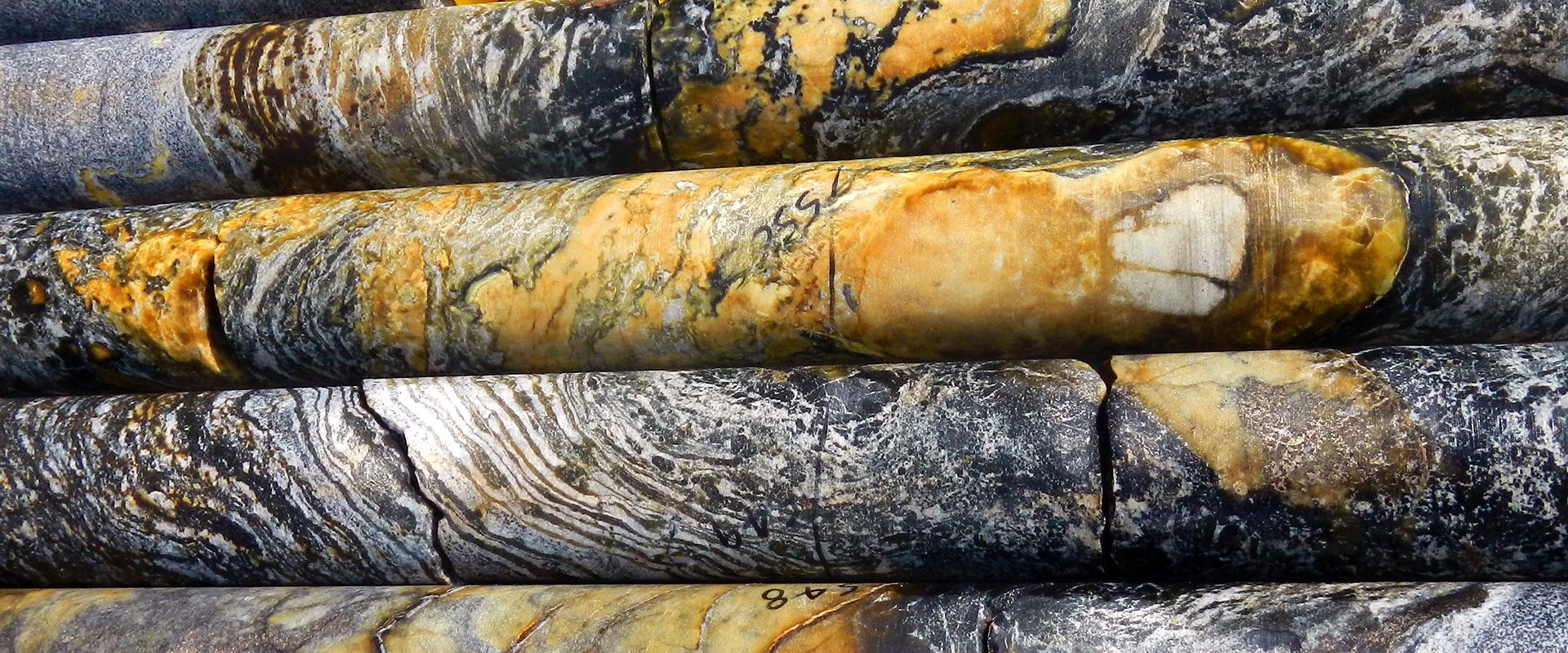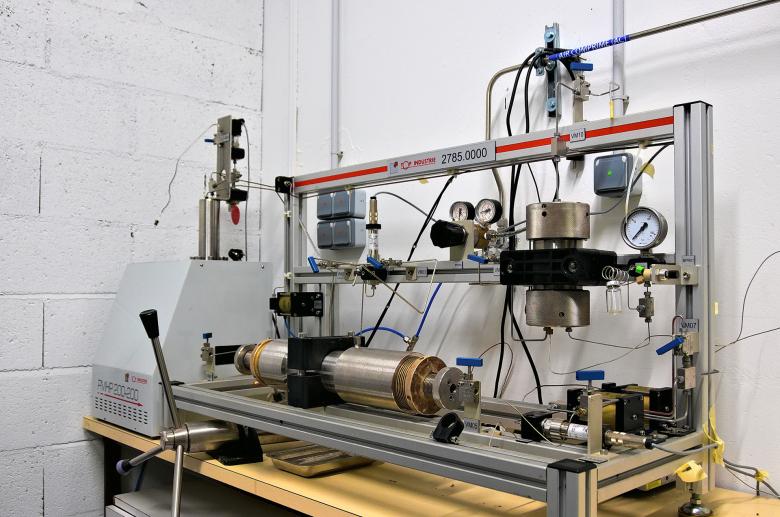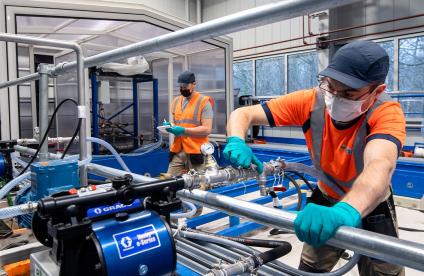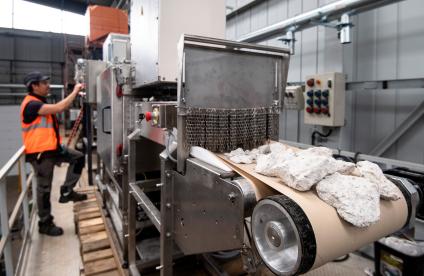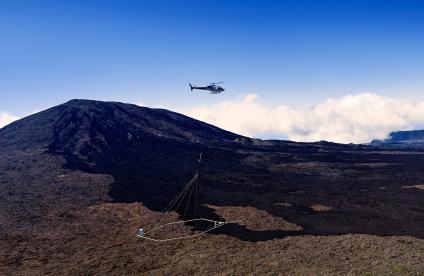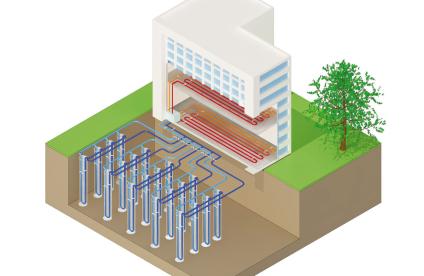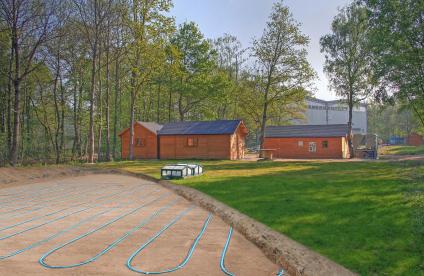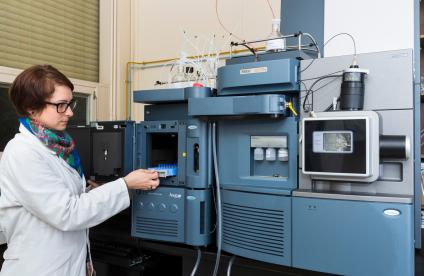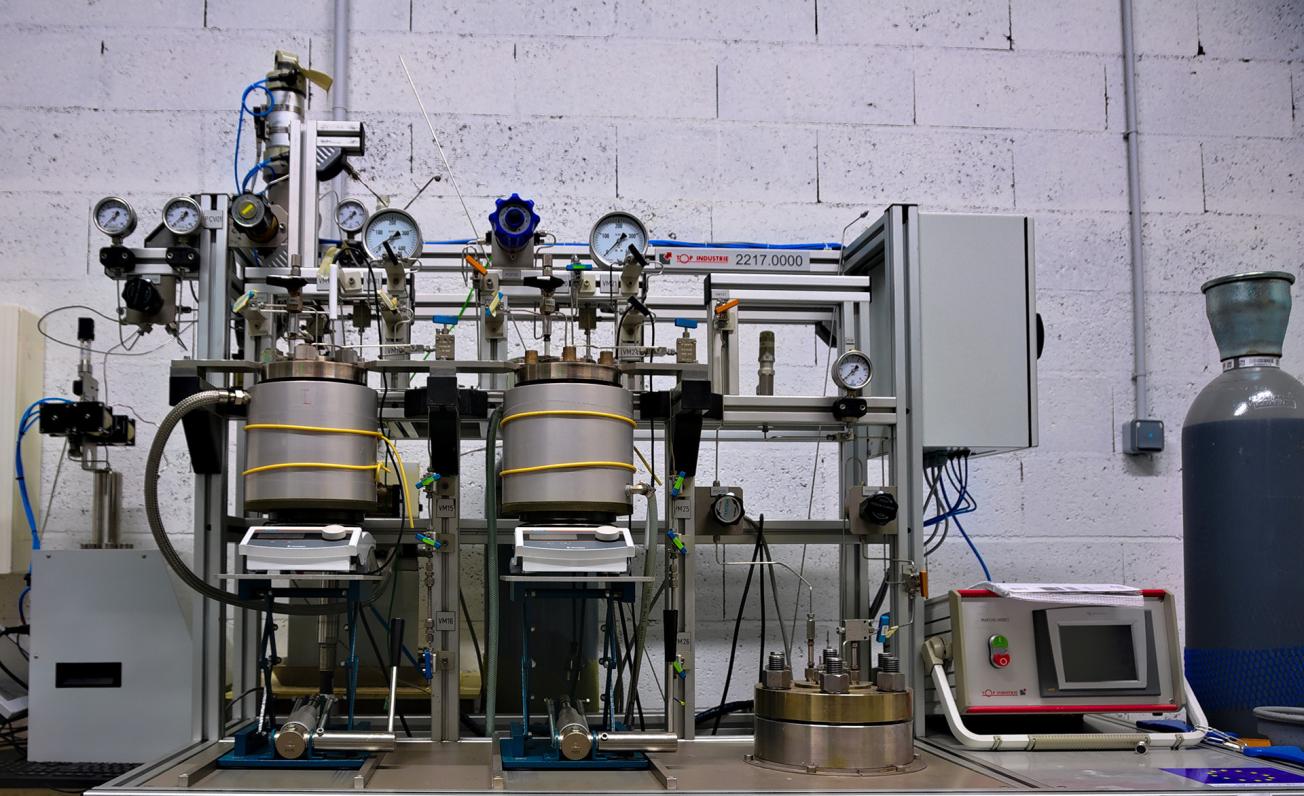
TransREP reactors, part of BRGM’s BioREP platform for the study of deep environments.
© BRGM
The BioREP (BioReactors for the Deep Environment) platform enables the reproduction of deep geological environments in order to study them and/or to characterise the effect of various natural and/or industrial processes taking place there.
Its four experimental devices can be used to:
- perform static and/or dynamic tests (percolation through rocks, fluid transfer, etc.) using various matrices (cores, cuttings, crushed rocks, soils, beads or synthetic materials);
- work at up to more than 200 bar (and up to 500 bar under certain conditions) and up to 120°C (and up to 200°C under certain conditions);
- study the interactions between water, rocks, gases and micro-organisms in complete safety.
The platform consists of several reactors, transfer columns and other tools (pumps, sensors, etc.) that can be modulated and combined ad infinitum in order to carry out customized tests. Each reactor is equipped with several sensors allowing precise monitoring of the environments (pH, Eh, pressure, temperature, gas consumption, flow rate, etc.). Particular attention was paid to the choice of materials in order to ensure the inertia of the system from a chemical and microbiological point of view. Specific sampling procedures were also implemented to enable working in anoxic environments, and to take samples in complete safety, while limiting the risk of pollution of the environment and lethality of microorganisms due to decompression.
The BioREP platform is used in particular for:
- characterising materials (corrosion, leakage path, structural stability),
- determining (bio)geochemical budgets (precipitation, dissolution, biogeochemical interactions),
- studying the operating parameters of a reservoir (injectivity, porosity, clogging, leak indicator, etc.).
Fields of application
Geological storage and use of CO2
- Storage in different forms, mineralized, supercritical or dissolved, in rocks or aquifers,
- Study of carbonate precipitation in the presence of microorganisms during injection of dissolved CO2 into basaltic rocks,
- Characterisation of the reservoir and the injection process (PilotStrategy Project);
- Study of the effect of CO2 injection on rocks (reservoir, caprock, concrete, etc.) and naturally occurring subsurface microorganisms (CGSµLab Project),
- Simulation of CO2 leakage from geological CO2 storage reservoirs.
BioREP is part of the network of European Research Infrastructure ECCSEL platforms designed for the capture, transport, use and geological storage of CO2 and energy carriers such as hydrogen.
Geological storage of energy
- Production and storage of hydrogen and heat;
- Characterisation of storage reservoirs;
- Effect of geothermal cycles on aquifers from a geochemical and microbiological point of view;
- D2-Grid project: Effect of heat and cold storage in an aquifer;
- Production of biogas by a biomethanation process: conversion of CO2 and H2 into CH4 in an underground environment and in the presence of micro-organisms for large-scale energy storage (Power-to-Gas).
Production of mineral resources
- Mining of brines for the extraction of metals (lithium, etc.);
- Metal extraction via in situ (bio)leaching processes;
- BioMOre Project : Extraction of copper from very deep environments using an in situ bioleaching process.
- Characterisation of the viability of processes: yield, risk of clogging, geochemical budget, evolution of porosity, etc.
Biodiversity of underground environments
- Characterisation of subsurface and groundwater biodiversity;
- Study of the effect of certain conditions (temperature, addition of CO2, etc.) on the evolution of microbial communities;
- Study of bioprocesses: storage of CO2, biomining, etc.
Available facilities
The BioREP platform is a key tool for our laboratories and can use all their facilities to characterise and analyse water, rock, gas and micro-organism samples.
Four complementary devices
- TransREP: three reactors that can be used independently or simultaneously (in series) to simulate reservoirs or fluid transfers.
- MicroREP: a “lab on chip” device for studying systems at the micrometer scale. It is suitable for in situ observations, for increasing the number of trials (testing different conditions or making replicas) or for studying fundamental processes.
- CycloREP: the heart of this device is a Hassler cell used for percolation tests, with the possibility of recirculating the percolating fluid. CycloREP was designed to characterise leaching processes and solution injectivity through rock.
- MultiREP: combines the features of the previous devices by allowing both batch and percolation tests to be carried out in 3 different cells simultaneously. A microfluidic analysis line completes the device, for characterising the fluid by UV/Visible light without disturbing the medium.
Digital Tools
- Chemical speciation software: Phreeqc, Phreescale, Toughreact, etc.
- Thermoddem database on thermodynamics/kinetics of natural and industrial processes;

